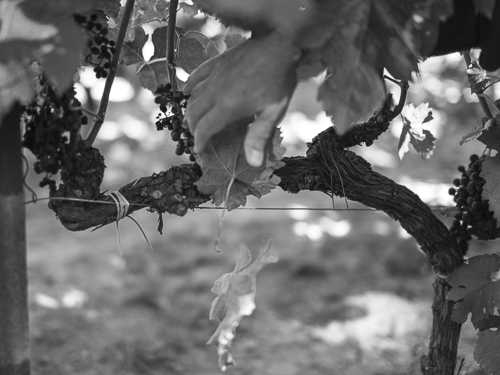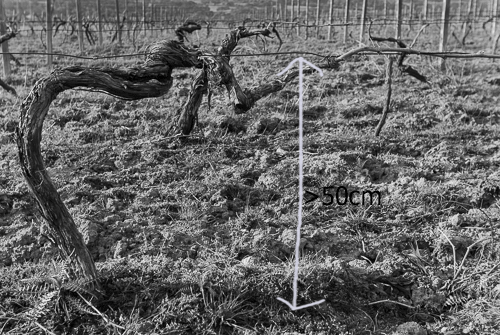This farm extends from the hill on which a castle with the same name dominates the entire valley surrounded by the elevation where the historic house of the Corsini family is located and the natural park of Maremma. It’s fair to say that this hill has served as a place for controlling the surrounding countryside and, in particular, the river Albegna where people had to cross a ford in order to pass this area.
Anyway, the Etruscans controlled this area and they may have founded a town called Caletra, which is now called Marsilia. After the Romans had defeated the Etruscans, it was called Agro Caletrano. During the early Middle ages, a monastery was built on the hill. There, pilgrims could rest on their way to Rome, the Eternal City.
A castle was built on the top of the hill in the 12th century being controlled by various powers until it was used as a military fortification during the Spanish domination from 1559 to 1713. Next, the Corsini family arrived at Marsiliana in 1760 and they constructed a fortified farm below the castle in the early 1800s. A contract from 1868 between the bank Monte dei Paschi and the Corsini family states that the property of all the surrounding terrain is transferred to the Corsini family. The local farmers worked as sharecroppers for the Corsini family until 1950 when there was a Land Reform act. Then, a large part of the land was expropriated by the state in order to give 8 to 20 hectares and a house to each farmer family.
A large part of the land covered by marshes was reclaimed by means of drainage, canals and pumps. In this way, malaria, which had been a major cause of death among the sharecroppers, disappeared completely. Thus, the Land Reform act turned the sharecroppers into farmers with their own houses and their own land. Before, they had always worked as sharecroppers, getting back only a small part of what they had cultivated. Instead, the Tenuta di Marsiliana farm have turned to raising wild boar for hunting, cultivating grapevines and renting out houses, which have been converted into apartments, to tourists.
The area of the vineyards amounts to 26 hectares. The grapevines, consisting of Petit Verdot and Cabernet Sauvignon, were planted between 1988 and 2006 and all of them are productive. The best grapes are collected manually, while the rest is collected by means of machines.
The man responsible for wine production kindly showed us the vineyards, at the same time as he explained various aspects of viticulture in a very clear way. For instance, the orientation of a vineyard should always be located east-west and never north-south in order to let the grapes receive as much sunlight as possible.
Regarding cultivating the grapevines, it is done according to a French method where the canes of the grapevines are forced to grow 50 cm above the ground.
However, this method is adapted to the climatic characteristics of French vineyards where strong winds exert strong forces on the grapevines. By keeping the grapes closer to the ground, the force of the wind will be lower. Instead, he would prefer to let the branches grow higher above the soil in order to limit various types of funghi to reach the leaves and the grapes. This area is surrounded by hills, which limit the speed of the winds reaching the vineyards. Besides, by growing the branches higher above the soil, it would be easier for workers to harvest the grapes.
He also told us about pruning whose objective is to let the grapevines produce more grapes with a high quality. This is done by creating a strong root system and trunk and remembering that grapes produce the most fruit on shoots growing off one-year-old canes.
Pruning is done in winter, which is called dry pruning and the second one is done in spring or early summer. This pruning is called green pruning.
In addition to pruning, leaf removal also has to be done and this consists of removing leaves around the grape clusters. The main purposes are the following:
- Improve air circulation.
Increase fungicide/insecticide spray penetration.
Expose the fruit to more sunlight.
Improve flavor compounds, color, and bud fertility.
Some leaves have to remain on the shoot in order to produce carbohydrates to support vine growth, fruit development and ripening, develop overwintering reserves and to allow vine shoot and bud winter hardiness. As this document shows, growing grapevines requires a lot of knowledge and experience.
Since roe deer and wild boar live in the forests surrounding the vineyards, all of them are fenced off.
On the way back to the wine production, we passed a vineyard which had been harvested by means of a machine. As my guide told me, several branches had wizened leaves because the machine isn’t able to be as careful as the workers.
The wine production takes place in a huge building having an area of 1760 m2. It was constructed in 1900 by the Corsini family who used it as a storeroom for grain until the Land Reform act was enacted in the 1950s. Inside, there were arcs made by bricks, while the floor was covered by stone tiles, all of it done manually. Nowadays an agricultural cooperative rents 250 m2 for producing wines.
Like always, this wine producer lets wine mature in large tanks, but the must and grape skins from one vineyard is kept strictly away from the must and grape skins from other vineyards.
Having added yeast to the must, the fermentation starts, turning sugars into alcohol. The fermentation creates carbon dioxide which rises to the top of the must, lifting the pomace to the surface at the same time. Since this process produces heat and the yeast can’t survive above 33-34°C, the temperature has to be limited. This is done by letting cold water flow in tubes located inside the container such that the cooling is done indirectly. In fact, a control loop maintains the temperature at 25°C because it’s best for the yeast.
Some days later, a filter is placed above a container and below the valve at the base of the tank containing the must. One end of a hose is connected to a container, while the other end is connected to a pump. The top of the tank is also opened through which a hose is fed, while the other end is connected to the pump. Next, a worker opens the valve and starts the pump. Wine will flow out of the tank, passing the filter, which will stop the pomace. Instead, the must will pass unhindered and be pumped up to the top of the tank. This process provides oxygen to the must, which aids the fermentation. In addition, the must is forced to pass the pomace, which gives various good characteristics like taste and colour to the must.
When the process of fermentation stops because all the sugars have been turned into alcohol, racking is done. That is, the wine is separated from the pomace by means of gravity and transferred to another tank. Instead, the pomace is crushed once more. The resulting wine may be mixed with the original wine in order to make a blend or it may used as table wine. In any case, an oenologist decides what’s to be done in each case.
The pomace will have to be transferred to a distillery for making grappa in order to avoid fraud using the pomace to produce wine by means of chemicals, according to Italian law.
This farm has a wide selection of wines as described here: The majority of the wines are DOC or IGT.
Last but not least, there is an interesting ethnographic museum inside the castle: documents and various equipment used by people across the ages tell visitors about life and work in this place.


